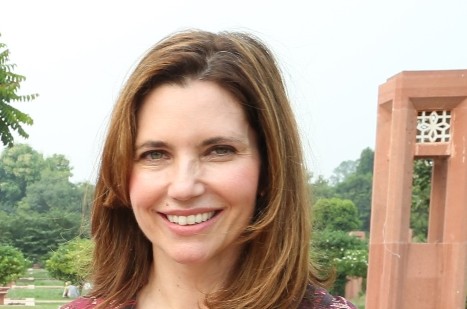By Evan Ryan, U.S. Assistant Secretary of State for Educational and Cultural Affairs
I visited India this past week and I was encouraged to hear how India and the United States are working together to solve the world’s toughest challenges, in part due to the power of people-to-people exchange programs. I heard time and again while I was in New Delhi and Mumbai how cultural and educational exchange programs are vital to the U.S.-India relationship, which has grown tremendously over the past few years.
India is one of the top study abroad destinations for Americans outside of Europe, and this year alone, more than 130,000 Indian students are in the United States, studying at our best colleges and universities. More than 150 American high-school students have studied Hindi in India through the National Security Language Initiative for Youth. And, with approximately 16,000 U.S. Department of State exchange program alumni, India has one of the largest and most diverse exchange alumni portfolios in the world. Over the years, hundreds of former participants of our exchange programs have risen to important positions in India, including four prime ministers—Prime Minister Modi among them—two presidents, multiple ministers and legislators, as well as luminaries from the media, civil society, and business fields.
Last week I spent time with many of these emerging leaders, from meeting with students at Mumbai’s Sophia College to discuss women’s empowerment to touring the Batashewala Mughal Tomb Complex with a group of ACCESS students. It is clear that together we are tackling global challenges and improving understanding.
Nowhere is this more evident than in the Fulbright-Nehru program, which was first created in 1950. Since then, India has grown to have the largest faculty Fulbright program in the world. And on the individual level, the impact can be felt both in India and in the United States.
For example, I read recently the amazing story of a Fulbright scholar from Mumbai, studying at Johns Hopkins, who is working to map rare genetic disorders across India, which ultimately could lead to solutions and ways to treat suffering children in so many countries. Back in the United States, we have the Millennial Trains Project, which was founded by Fulbright alumnus Patrick Dowd, who participated in the Jagriti Yatra, a train journey designed for young entrepreneurs, during his study abroad experience in India. Once back in the United States, Dowd saw an opportunity to engage millennials here in the United States and was inspired to create a similar experience for American and international social innovators.
The list of ways our two countries learn from each other through exchanges goes on and on. In 2014, our two nations launched a new U.S.-India Climate Fellowship Program to build long-term capacity to address climate change related issues in both countries by offering exchange programs for climate change scholars. The Study of the U.S. Institutes for Student Leaders exchange supports Indian undergraduate students focusing on New Media, Environment and Women’s Leadership issues to attend programs hosted by American colleges during their summer break. And, the Community College Initiatives Program enables youth from underserved communities to study at an American community college for a year to develop professional skills.
Earlier this year, U.S. Secretary of State John Kerry said that our governments are now engaged on more substantive issues in more vital areas than at any time in the history of this relationship. I believe that exchanges play a role in this accomplishment. While in the United States, students and professionals share their culture with Americans, and this opens doors for us to work together to solve the world’s toughest problems.
The increased cooperation of officials to create ties has enhanced engagement in education, in climate change policy, trade and investment, and in diplomacy. People to people connections grow to city to city engagements, then state to state engagement – all of which leads to new partnerships in business and the private sector and enhance our government to government engagement.
Our collaboration through exchanges are a shining example of the great good that can happen when government, the private sector, the academic and higher education sector, and the tens of thousands of individuals work together. We are building a better tomorrow, and it often starts with a handshake and a conversation.
Evan Ryan is the U.S. Assistant Secretary of State for Educational and Cultural Affairs. To learn more how you can get involved with exchange programs, connect with your American Embassy or Consulate outreach section, especially by visiting an American Center or American Corner. Or follow @ECA_AS on Twitter.
